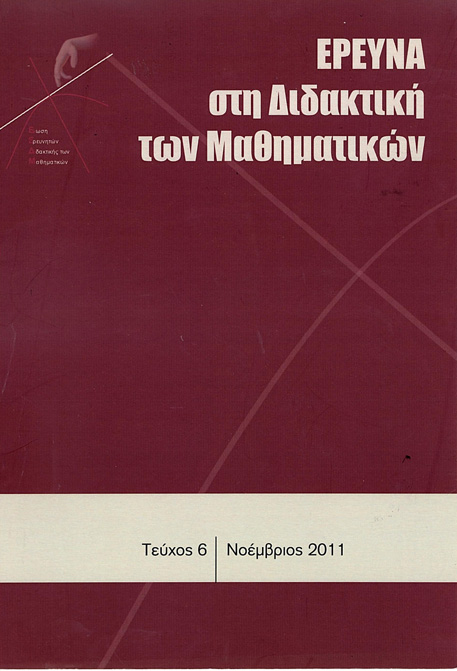Preschoolers Measuring area by covering surface with auxiliary means

Abstract
The spontaneous engagement of children with informal measurement is common in kindergarten classes. Apart from spontaneous measurement activities it is important for the kindergarten program to include planned measurement activities. Such activities can create interesting mathematical discussion which can guide children in a precise way to the basic characteristics of measurement. Based on the interpretive framework (Cobb, 2007) for learning mathematics, it was assumed that if meaningful planned activities would be conducted in such way as to engage children in discussion, different reasoning would emerge which could be reformed through the mathematical discussion with the researcher and the other students, and that through this interaction the mathematical classroom practice can be created.
In this article, the intervention about measurement that took place in a kindergarten classroom by covering a surface using auxiliary means is described. Three research questions were addressed: 1) Have kindergarten children the ability to cover systematically a surface with discrete material and count it? 2)Can kindergarten children perceive the inverse relationship that characterizes the size of the unit and the number of units in a measurement? 3) Have kindergarten children the capability to cover a surface with continuous material? The participation in addressing researcher’s concerns, through the work in groups and through the presentation of their construction led to the interaction between the kindergartners and the researcher, to the creation of mathematical discussion as well as to the expression of different solutions. From the results it seemed that the kindergarten children were able to cover a surface with discrete material as well as, that the inverse relationship which characterizes the size of the unit and the number of the units in a specifi c measurement, deemed to be perceived by some kindergarten children. The type of the means and the quality of the involvement in the activity, together with other factors, such as working in groups and the mathematical discussion that has been created, might formed the key factors that helped young children to realize the measurement activity.
Article Details
- How to Cite
-
Σκουμπουρδή (Crisanthi Skoumbourdi) Χ., & Παπαϊωάννου-Στραβολαίμου (Dimitra Papaioannou- Stravolaimou) Δ. (2017). Preschoolers Measuring area by covering surface with auxiliary means. Research in Mathematics Education, (6), 39–59. https://doi.org/10.12681/enedim.15034
- Section
- Articles

This work is licensed under a Creative Commons Attribution 4.0 International License.
Authors who publish with this journal agree to the following terms:
Authors retain copyright and grant the journal right of first publication with the work simultaneously licensed under a Creative Commons Attribution licence that allows others to share the work with an acknowledgement of the work's authorship and initial publication in this journal.
Authors are able to enter into separate, additional contractual arrangements for the non-exclusive distribution of the journal's published version of the work (e.g. post it to an institutional repository or publish it in a book), with an acknowledgement of its initial publication in this journal.
Authors are permitted and encouraged to post their work online (preferably in institutional repositories or on their website) prior to and during the submission process, as it can lead to productive exchanges, as well as earlier and greater citation of published work (See The Effect of Open Access).


